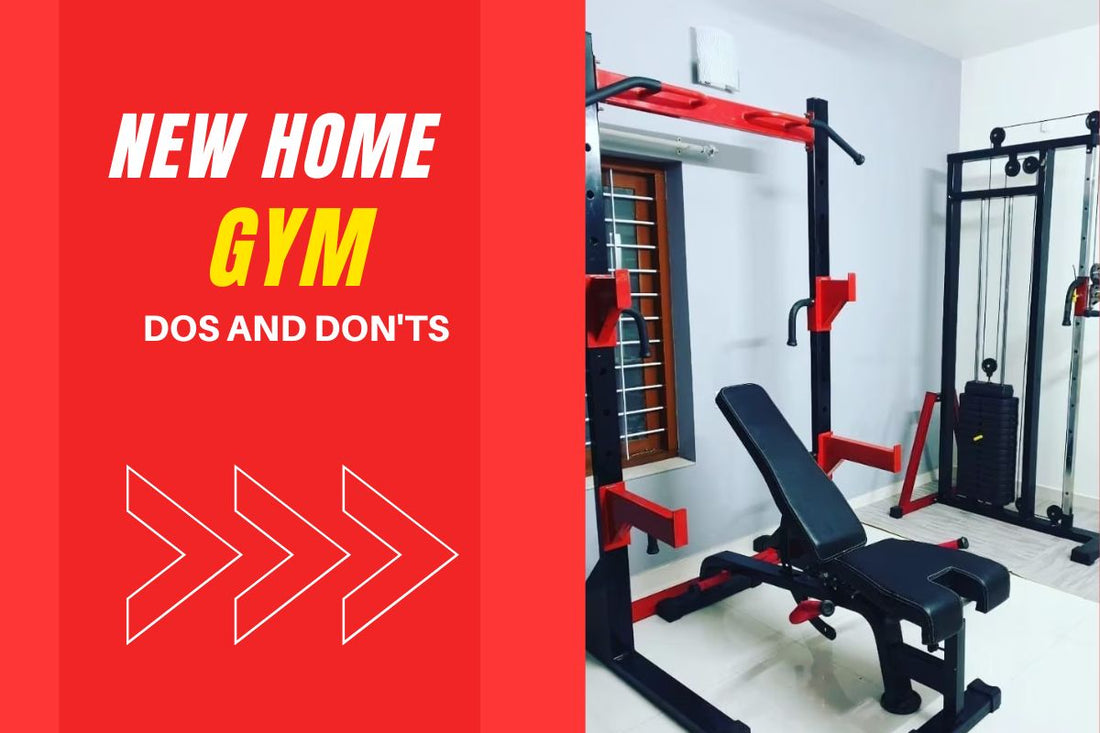In today's time, having the home gym setup is the best investment that you can make for your physical and mental well-being. When you have to balance multiple deadlines, sticking to the timeline of your gym becomes really difficult, and in that case, your expensive gym memberships are a complete waste of money.
If you have not thought about building your own workout space, then give it a try to save money and time as well as boost your productivity. Even though creating your home gym comes with its own set of challenges, knowing about a few do's and don'ts can help you get through this journey easily. That's why today's blog is dedicated to understanding the do's and don'ts of building a home gym.
What are the Things to Remember while Building a Home Gym: The Do’s?
1. Set Clear Fitness Goals - Plan Ahead
The very first thing to do before investing in any gym equipment is setting clear fitness goals. You must plan ahead and question yourself about what kind of workouts you would like to engage in. What is your end fitness goal? Or are you trying to lose weight, build muscle, or just working out to stay healthy and active?
By answering these questions you can easily choose the category of equipment you will be buying for your space. For instance, if you enjoy building muscles, then you must buy strength training equipment. Or if you want to work out for general fitness, you might buy a yoga mat that could help you with stretching and other exercises. This way you can also avoid wasting money on buying unnecessary stuff.
2. Measure and Design Your Space with Care
The next thing on the list of building a home gym is looking closely at the space you would be using for your workouts. It can be a basement, a spare room, a garage, or a small corner around your house that you would like to convert into a workout space.
You should measure the space, check the ceiling height, and make sure that the room has enough space for you to work out and store the equipment easily without being jam-packed. Apart from this, it is also necessary for you to ensure that this space has enough storage, proper ventilation, and lighting to facilitate your workout sessions. This helps you maximize the space you have at hand.
3. Prioritize Durable, Multi-Use Gym Equipment
Prioritizing durable and multi-use equipment is another way to make your purchase of a gym machine purchase affordable and smart. When it comes to fitness equipment, he must always look for equipment that would last longer and help with a variety of workouts.
Instead of buying products that serve a single purpose with workouts, you can buy fitness essentials that can be used in different ways. For instance, a set of resistance bands, a squat rack, modifiable gym benches, adjustable dumbbells, etc., are a good choice for products that can be used for building a home gym.
4. Build It Step by Step
No one can build a dream gym overnight. So you must start by adding a few basics and then expand your gym over time. Instead of boarding equipment, start building your gym step by step and let your workout space grow slowly with you. Try to add more weights as you progress or upgrade your machines according to your requirements.
It is the best way to keep your expenses on fitness products in check and only buy equipment according to your fitness level at that time. It also prevents big expenditures and divides the burden.
The Don'ts of Building a Home Gym; Common Mistakes to Avoid
5. Don’t Buy Random Equipment
Coming to the things that you should avoid doing while creating your workout setup is buying random equipment. You should only buy that which matches your workout preferences. Do not waste your money on equipment that would likely be sitting in one corner of your space and get soiled by dust for days. If you are a beginner to workouts, then start with minimal and basic fitness accessories and equipment.
6. Avoid Cluttering The Space
Another "don't" on this list is about space management. It is suggested that you should not clutter your space or overcrowd it. Bulky and nonessential equipment. If you want equipment for cardio, then you can buy a treadmill for home or an exercise cycle instead of having both, especially if you have a small space.
Cluttering and overcrowding the space not only limits your movement but also increases the risk of injuries and makes the area look suffocating. You should have enough space for exercises like stretching and free movement.
1. Don’t buy Worn-Out Equipment
If you were planning to buy secondhand equipment, do not compromise on your safety. Do not buy wobbly or worn-out equipment to save some money because it can lead to more expense and have other potential risks. Wobbly workout benches or inferior-quality barbell rods and dumbbells can lead to serious injuries, which result in long-term problems and maybe more investment in healthcare and medical facilities.
2. Avoid Rushing with the Process
Last but not least, avoid rushing with the process of building your workout space. While building an indoor workout space, you would require a lot of time to perfect everything according to your requirements. So, go slow with your gym building process and upgrade it to suit your requirements better.
In Conclusion
Overall, if you are mindful of these do's and don'ts, you can make your gym-building journey easier than ever. If you plan it right and keep the things organized in your place, it can be one of the best ways to stay fit.
You can make your fitness journey enjoyable by choosing quality equipment that we supply with the help of our imported product collection at Energie Fitness. Check out our wide variety of products and get fitness equipment of your choice at the earliest.




